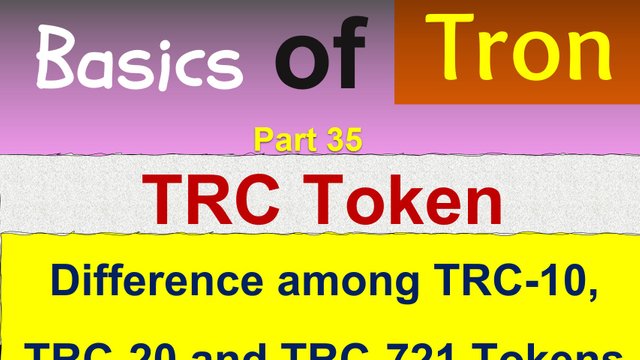Intro
IntroThe Tron Fan Club community works with people who love Tron Blockchain and are interested in blockchain technology. As a moderator of the community, I am regularly sharing the details of Tron with you. Our knowledge on any subject is enough. So, it’s a knowledge sharing opportunity for all of us. This community is an initiative to share tron based knowledge with each other.
Those who know a lot about the Tron blockchain have certainly come a long way, but for those who are brand new or want to get an idea on it from the beginning is a challenge. I am constantly writing in this community about the basics of Tron, from the very beginning. The name of this series I write about Tron is Basics of Tron. I provide links of my previous posts so that you can get a better idea by visiting those as well. Hopefully, tron lovers will be benefited from this series.


TRON is a decentralized platform for building blockchain-based applications and token creation. This blockchain has created opportunity to developers to work on their chain. TRC-10, TRC-20 and TRC-721 are three different token standards on the TRON network. I my last three tutorials I have discussed separately on each of the three token standards. My target is to discuss elaborate on these Token standards in this series of TRON tutorials. Each of the tokens has their unique featurs. Let’s differentiate them in this post.
TRC-10
TRC-10 tokens are the simplest type of tokens on the TRON network. They are similar to Ethereum’s ERC-20 tokens. This tokens are easy to create and issue. TRC-10 tokens are designed for smaller scale use cases. TRC-10 tokens do not require the use of smart contracts where others require to use smart contract. They are fast, cheap and efficient tokens among all but lack some of the advanced features and functionality of TRC-20 and TRC-721 tokens.
TRC-20
TRC-20 tokens are more advanced and use smart contracts for their creation and management. Basically, they are designed to execute smart contract based operations. They offer more functionality than TRC-10 tokens. TRC-20 tokens has ability to create decentralized applications and automated token-based transactions. They are more flexible and secure. Most problem with these tokens are their complexity and requirement of more resources & computing power to create and manage.
TRC-721
TRC-721 tokens can be called as non-fungible tokens (NFTs). They are unique and distinct tokens that cannot be exchanged for an equivalent value. That’s why are called so (Non fungible). Each TRC-721 token represents a unique digital asset. For any single collectible item or a piece of digital art there will be single token. TRC-721 tokens allow for the creation and ownership of unique digital assets. They provide a secure and decentralized platform for their exchange and trade.
TRC-10, TRC-20 and TRC-721 are three important categories of Tron Tokens. In last five tutorials I tried cover these topics. I hope it was useful for all of you. If you want to add some point or have any query then feel free to comment here in the comment section of the post. Thanks.



Click to Join our Discord Server
Through today's post I got to know the differences between TRC-10, TRC-20 and TRC-721. You always share many important things between us. Thanks bro for sharing with us.
Downvoting a post can decrease pending rewards and make it less visible. Common reasons:
Submit
This is a very nice post on the differences between trc 10, 20 and 721.
Thanks for sharing with us 😊
Downvoting a post can decrease pending rewards and make it less visible. Common reasons:
Submit